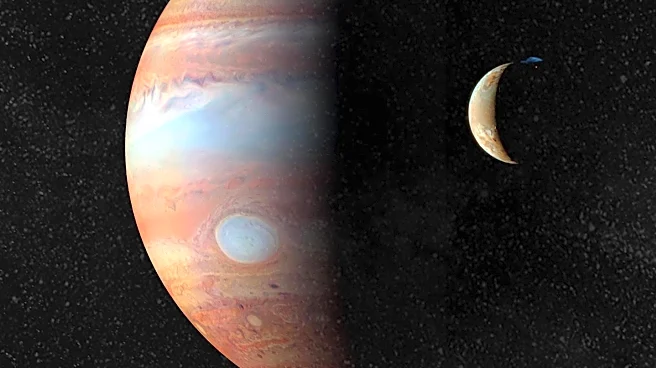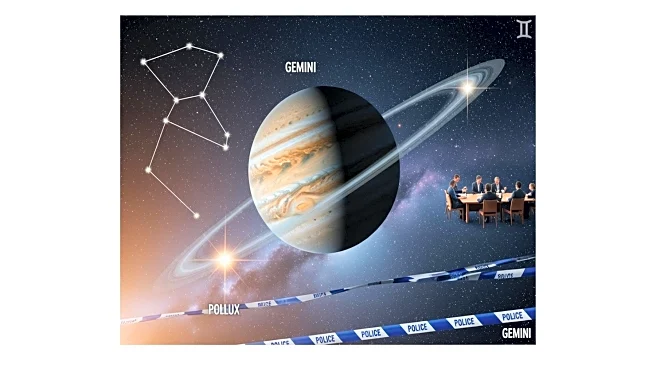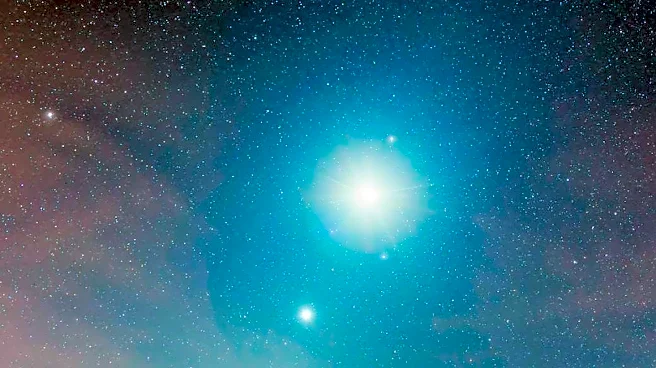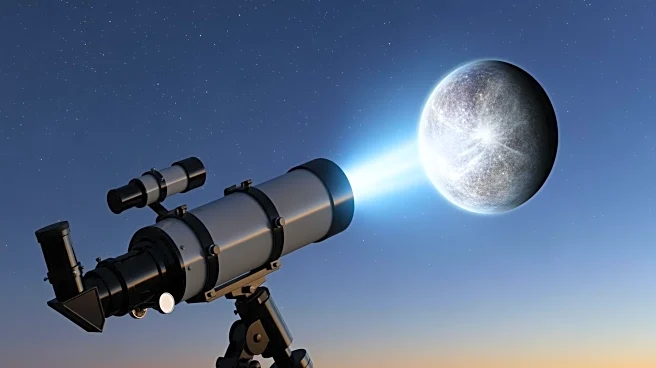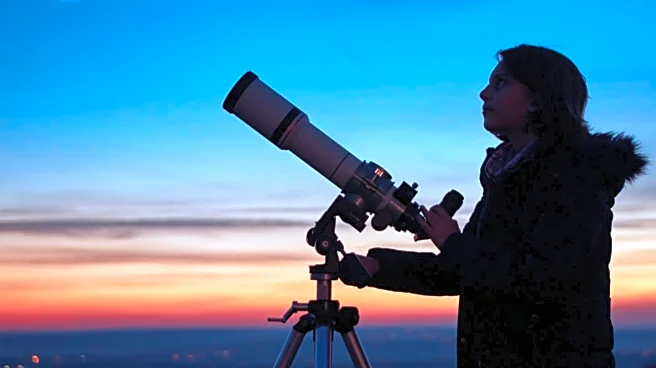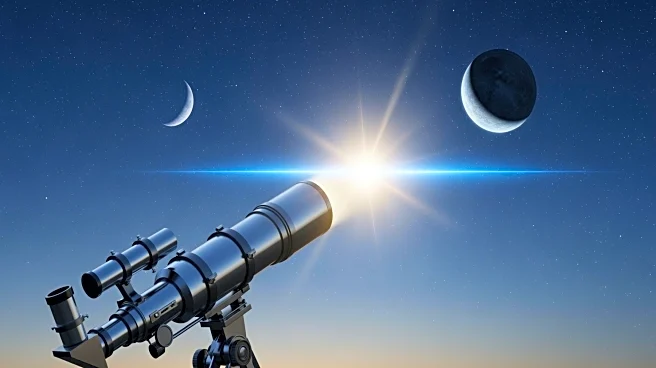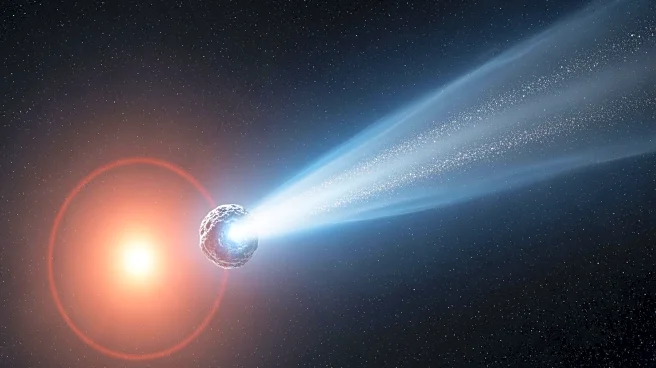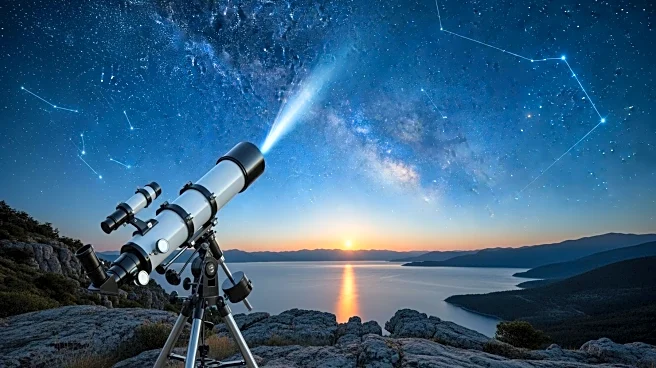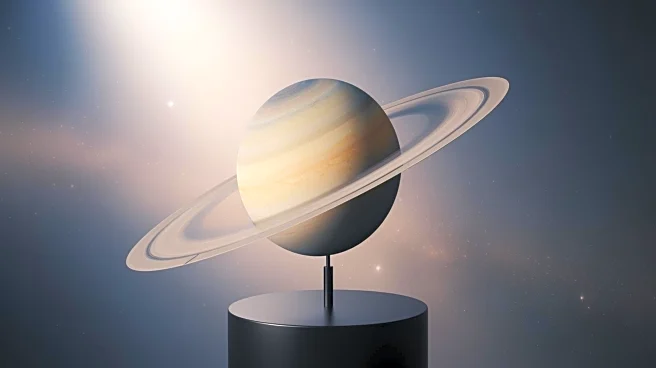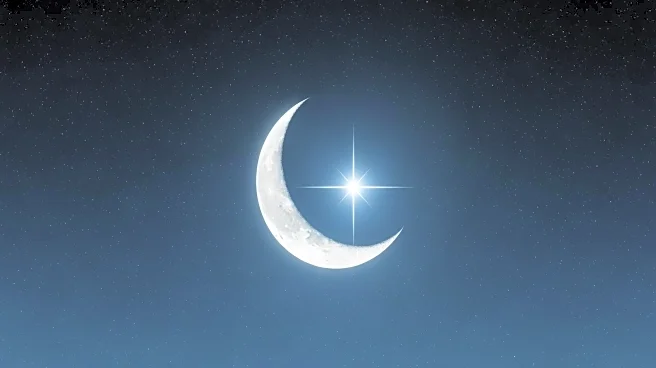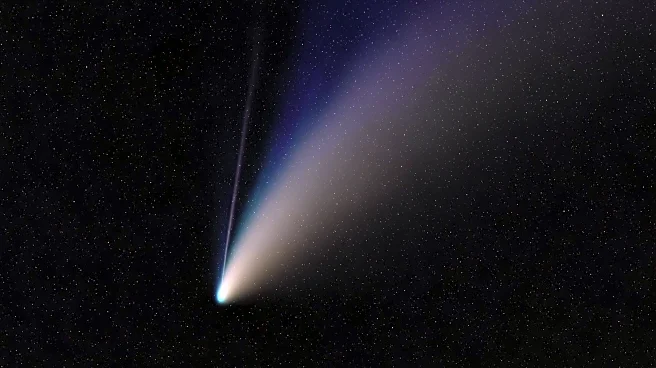What's Happening?
Astronomy enthusiasts have the opportunity to observe the dwarf planet 1 Ceres as it moves through the constellation Cetus. Ceres, visible at 8th magnitude, can be seen with binoculars or small telescopes.
The event is notable for its proximity to a bright field star, allowing observers to track its motion over a short period. Additionally, Jupiter will be visible south of Pollux in Gemini, with a magnitude of -2.2. East Coast observers can witness an occultation of Jupiter's moon Io, which will disappear into Jupiter's shadow and reappear later. The article provides specific ephemeris data for October 27th, including sunrise, sunset, moonrise, and moonset times.
Why It's Important?
The visibility of Ceres and the occultation of Io offer unique observational opportunities for amateur astronomers and enthusiasts. These events highlight the dynamic nature of our solar system and provide a chance to engage with celestial phenomena. Observing such events can enhance public interest in astronomy and encourage educational activities related to space science. The ability to track Ceres' movement also underscores the importance of small telescopes and binoculars in making astronomy accessible to a wider audience.
What's Next?
Observers are encouraged to take advantage of clear skies to witness these celestial events. The visibility of Ceres and the occultation of Io are time-sensitive, requiring observers to plan their viewing sessions accordingly. Future astronomical events will continue to provide opportunities for public engagement and education in astronomy.
